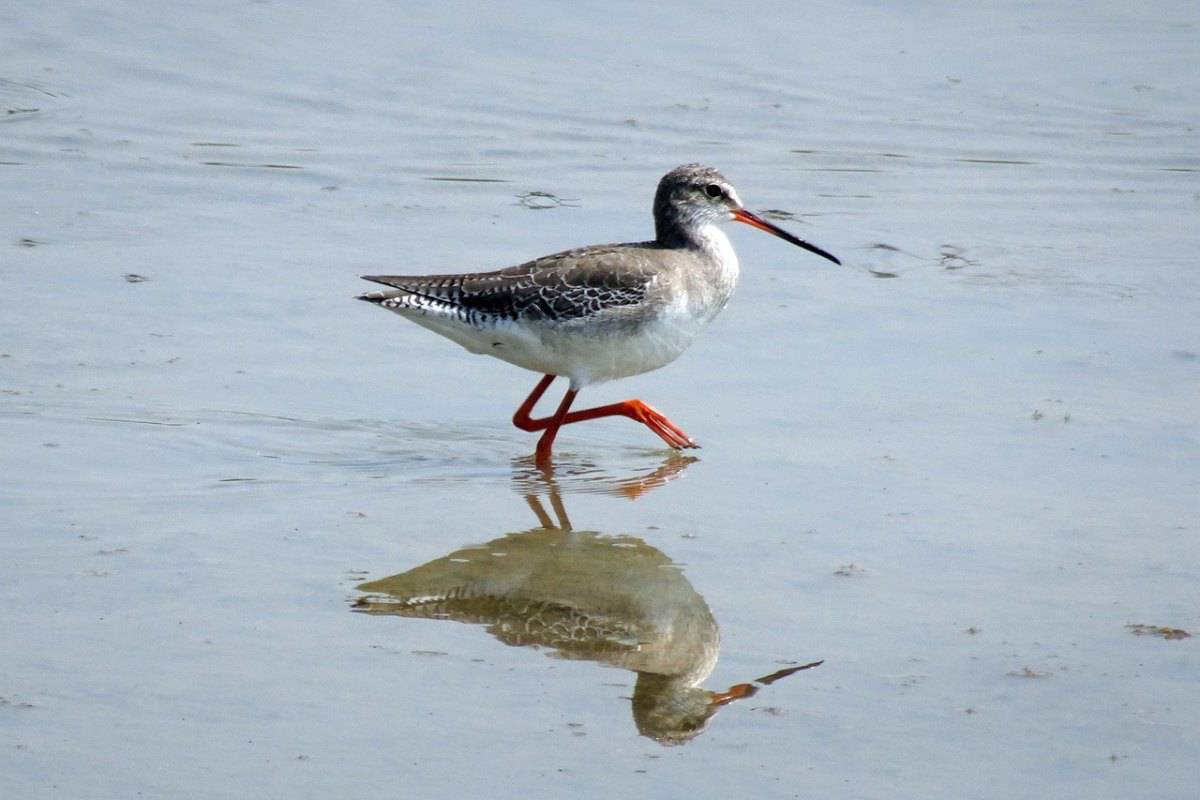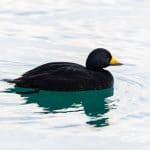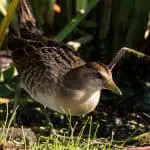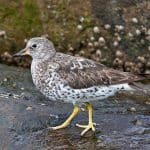Common Name: Spotted Redshank
Scientific Name: (Tringa erythropus)| Size | Diet | Range in Hawaii | Status in Hawaii |
|---|---|---|---|
| 12 in. - 14 in. | small crustaceans, worms, mollusks, and aquatic insects | Big Island | Least Concern |
The Spotted Redshank, also known as Tringa erythropus, is a medium-sized wading bird species that is native to Europe and Asia. While the species is not native to Hawaii, it has been known to occasionally visit the islands as a non-breeding visitor and vagrant. With its unique appearance and distinctive behavior, the Spotted Redshank is a fascinating bird species that has captured the attention of birdwatchers and avian enthusiasts around the world. In this article, we will explore the world of the Spotted Redshank, its unique characteristics, and its occasional presence in Hawaii.
Spotted Redshank
Appearance
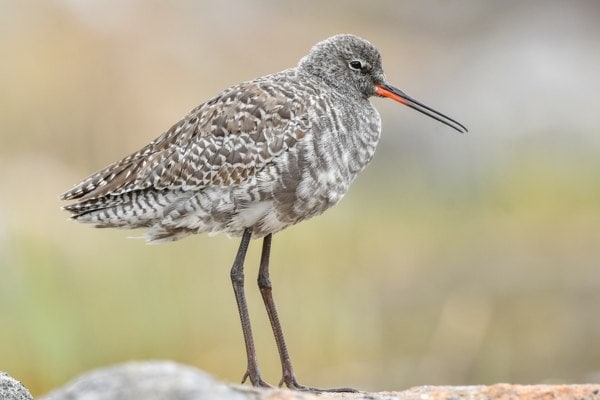
The Spotted Redshank is a striking wader bird known for its distinctive appearance. It stands at an impressive 12 to 14 inches (30 to 35 centimeters) tall, making it a graceful presence along waterways.
What truly sets the Spotted Redshank apart is its striking black-and-white plumage. During the breeding season, it boasts deep black spots and bars on its white underparts, a striking contrast that makes it easily recognizable. As winter approaches, its plumage takes on a more subdued grayish-white tone, maintaining its elegance year-round.
Diet
These elegant waders have a diverse culinary palette, primarily consisting of aquatic invertebrates. Spotted Redshanks are skilled foragers, using their long, delicate bills to probe mudflats, tidal pools, and shallow waters in search of tasty treats. Their menu includes a delectable assortment of small crustaceans, worms, mollusks, and aquatic insects.
Nesting
The nesting habits of the Spotted Redshank reveal a delicate balance between parental care and nature’s challenges. These elegant waders create their nests in well-hidden spots along wetlands and marshes.
Nests are typically constructed as shallow scrapes on the ground, lined with grass, leaves, and other natural materials. The female Spotted Redshank lays a clutch of eggs, usually numbering between three to four. Both parents share the responsibility of incubating the eggs and guarding the nest.
What adds intrigue to their nesting behavior is their readiness to defend their territory. Spotted Redshanks are vigilant protectors, using distraction displays and alarm calls to deter potential predators from their nests. As the chicks hatch, they embark on a remarkable journey of growth and survival under the watchful eyes of their devoted parents.
Behavior
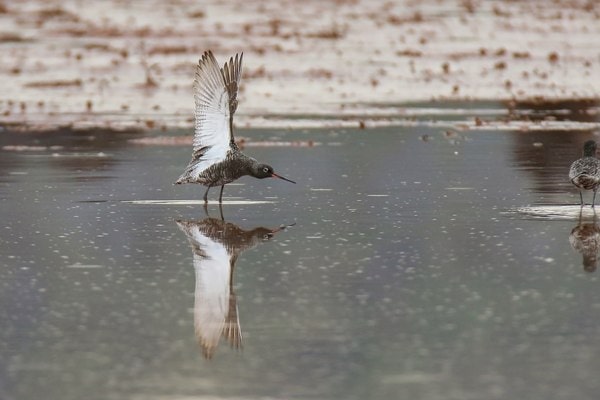
Spotted Redshanks are known for their elegant foraging techniques. They gracefully wade through shallow waters, probing the mud and sand with their slender bills to unearth a bounty of aquatic invertebrates. Their ability to transition seamlessly from a leisurely stroll to lightning-fast strikes is a testament to their hunting prowess.
During the breeding season, these birds are more vocal and territorial. They engage in courtship displays, such as aerial acrobatics and synchronized flights, to attract mates. Their melodious calls add a unique dimension to the wetland symphony.
Perhaps most intriguing is their ability to adapt to changing environments. Spotted Redshanks adjust their feeding techniques and preferred prey based on habitat conditions, showcasing their resourcefulness.
Habitat
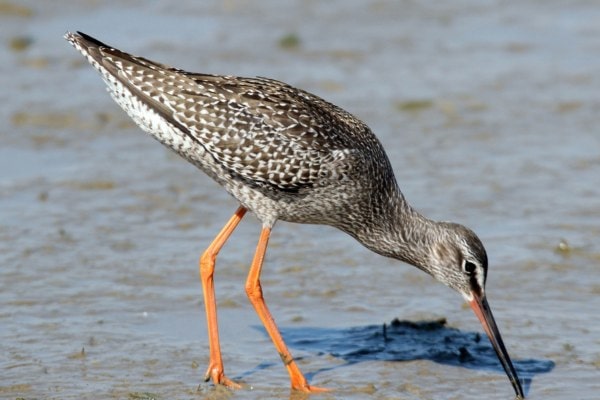
Spotted Redshanks prefer to call estuaries, tidal mudflats, and coastal marshes home. Their elegant presence graces the edges of calm lagoons and serene lakeshores. These habitats offer a bountiful buffet of aquatic invertebrates, the primary sustenance for these birds.
Range
This elegant wader, primarily found in Eurasia during its breeding and wintering seasons, occasionally ventures far into the Pacific. In Hawaii, it’s considered a rare vagrant, with a single recorded sighting in the Southeastern Hawaiian Islands. This remarkable first-year bird over-wintered at Kona (Kealakehe) STP on Hawai’i Island from November 2014 to February 2015, marking a noteworthy addition to the Hawaiian Island Checklist.
Conservation Status
The conservation status of the Spotted Redshank (Tringa erythropus) was generally positive, with the species classified as “Least Concern” by the International Union for Conservation of Nature (IUCN). This designation indicated that the global population of Spotted Redshanks was relatively stable and not facing an immediate risk of extinction.
Interesting Facts
1. Nocturnal nesting
Like many shorebirds, Spotted Redshanks often choose to nest during the night, which can provide some protection for their eggs and chicks from daytime predators.
2. Monotypic species
The Spotted Redshank is a monotypic species, meaning it does not have distinct subspecies. Its unique appearance and behaviors are consistent across its range.
3. Social roosting
Outside of the breeding season, Spotted Redshanks often gather in large flocks at high-tide roost sites. These social gatherings provide safety from predators and allow for shared information about food sources.
4. Underwater feeding
In their pursuit of prey, Spotted Redshanks sometimes engage in underwater feeding. They can partially submerge themselves while probing for food, showcasing their versatility in foraging techniques.
5. Conservation symbols
Spotted Redshanks are not only fascinating birds but also symbols of wetland conservation. Their reliance on wetland habitats highlights the importance of preserving these ecosystems.
Frequently Asked Questions
1. How long do Spotted Redshank chicks stay with their parents?
Spotted Redshank chicks are precocial, meaning they are relatively independent shortly after hatching. However, both parents typically provide protection and guidance until the chicks can forage on their own.
2. What is their typical lifespan in the wild?
In the wild, Spotted Redshanks can live for several years, with some individuals reaching 10 years or more.
3. Are Spotted Redshanks known to hybridize with other bird species?
While hybridization is rare, there have been documented cases of Spotted Redshanks hybridizing with other Tringa species, such as the Common Redshank.
4. Are Spotted Redshanks known to forage at night?
While they are primarily diurnal (active during the day), Spotted Redshanks may engage in nocturnal feeding, especially during high tides when prey items are more accessible.
5. Do Spotted Redshanks engage in nest reuse?
Spotted Redshanks typically construct new nests for each breeding season, rather than reusing old nests. They may select new nesting sites based on environmental conditions.
